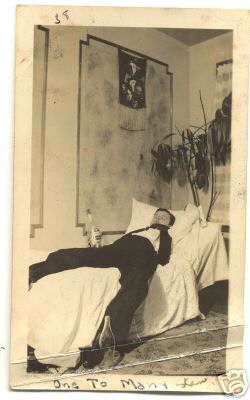Schwarz
View current page
...more recent posts
dum da dum dum
THE FABCHAT BOARDS ARE TEMPORARILY DISABLED WE ARE TRYING TO RESOLVE PROBLEMS ASSOCIATED WITH MASSIVE AMOUNTS OF SPAM THE BOARDS WILL BE BACK UP A.S.A.P. THANK YOU FOR YOUR PATIENCE AS WE STRIVE TO FIX THIS PROBLEM.
top gear odd vehicles
via zoller

Win the book, Glass House, edited by Toshio Nakamura, photographs by Michael Moran (Monacelli, 2007, $95.00).
In 1974, Philip Johnsonís Glass House was 25 years old. The Architectural League of New York celebrated with a birthday picnic on September 22 of that year, with photos documenting not only the house, but the grounds and other Johnson-designed structures.
Not much has changed but the people. All you have to do is identify as many guests as possible from the architectural community in the following photos to win the prize.
There's an inconvenient truth that preservationists typically gloss over in their ever-more-pressing fight to save mid-20th Century modernist buildings from demolition: Many (though certainly not all) of these buildings are tough to love.
Perhaps it's their cool abstraction, or their labyrinthine floor plans, or their harsh materials, like the serrated concrete that can practically cut your skin. Whatever the reason, the American public has yet to cotton to these buildings. A survey of America's 150 favorite works of architecture, released last February, didn't contain a single structure by Chicago's master of steel and glass, Ludwig Mies van der Rohe.
But popularity is one thing; quality is another. A half century ago, when Space Age America was infatuated with all things new, there wasn't yet broad-based popular support for preserving old Victorian houses or Beaux Arts train stations that evoked the grandeur of ancient Rome. They were, like today's threatened mid-century modernist buildings, too old to be new and too new to be old. And so, they were shortsightedly torn down. Now the question is whether we're about to make the same mistake again.
johns new fridge
